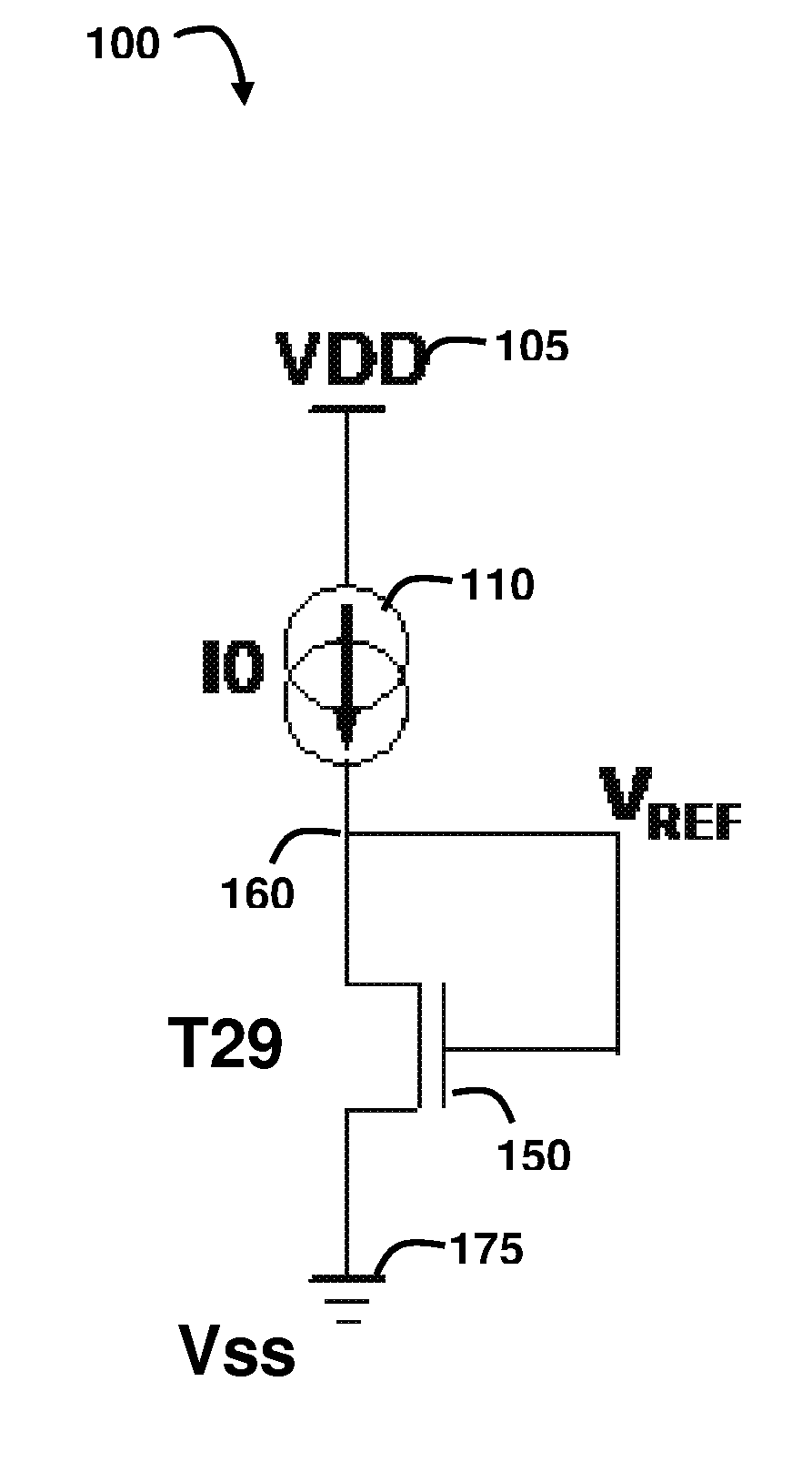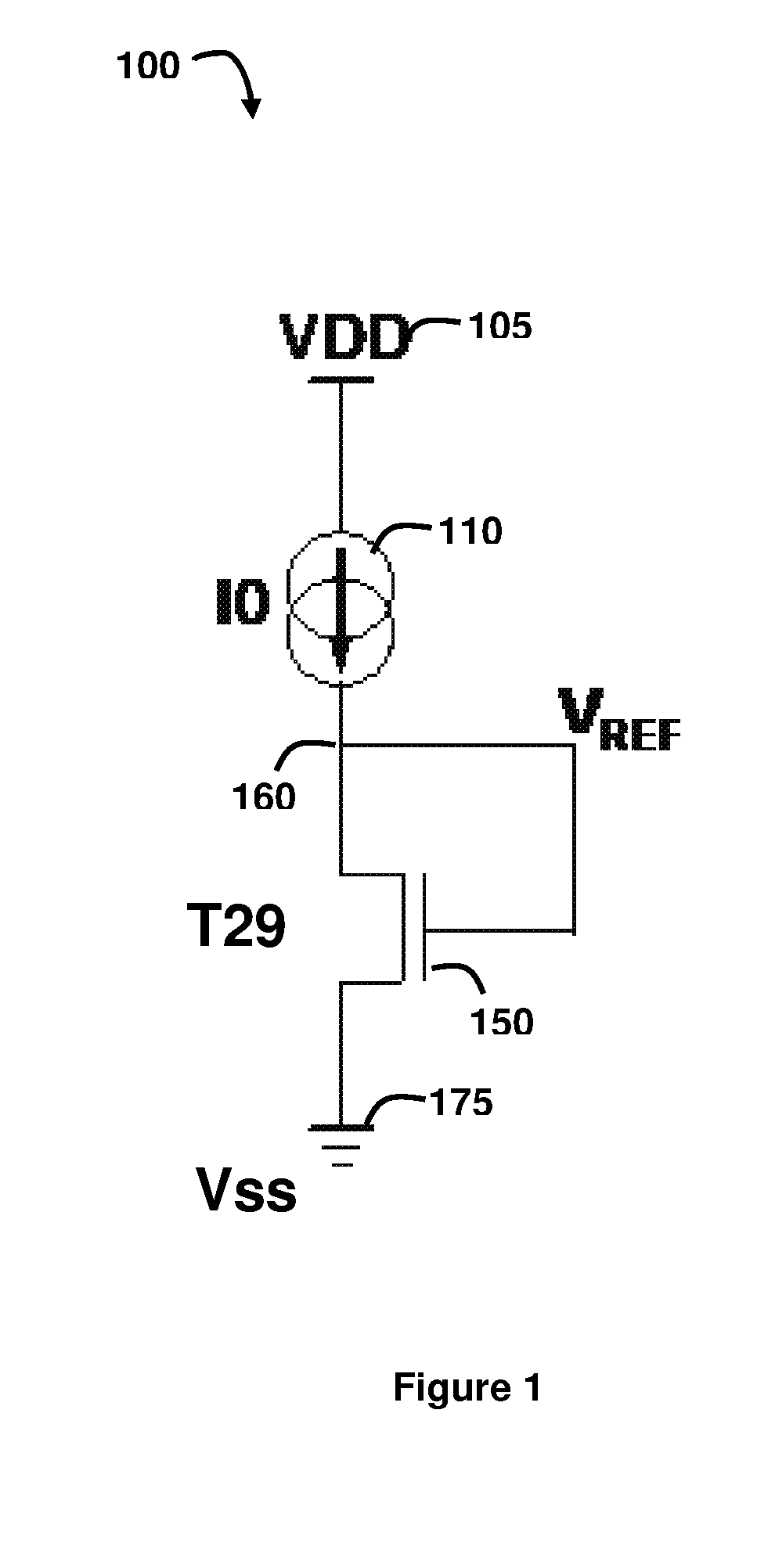Low power CMOS voltage reference circuits
a low-power, reference circuit technology, applied in pulse generators, instruments, pulse techniques, etc., can solve the problems of voltage reference block in analog circuits, block voltage reference in analog circuits, and the supply voltage is reduced
- Summary
- Abstract
- Description
- Claims
- Application Information
AI Technical Summary
Problems solved by technology
Method used
Image
Examples
Embodiment Construction
[0014]Where reference is made in any one or more of the accompanying drawings to steps and / or features, which have the same reference numerals, those steps and / or features have for the purposes of this description the same function(s) or operation(s), unless the contrary intention appears. The terms VDD refers to a positive voltage supply to the circuit and the term VSS refers to negative voltage supply or the ground. The term reference current, current proportional to absolute temperature, (IPTAT) current are used synonymously.
[0015]FIG. 1 illustrates an exemplary embodiment of a circuit 100 configured to provide a stable reference voltage (VREF). The circuit 100 is coupled between a positive voltage supply 105 (VDD), which supplies a respective voltage to the circuit 100, and a negative voltage supply 175 (VSS), which is also referred to as the ground connection. The circuit 100 consists of a current source circuit 110, which is configured to generate and provide a current that is...
PUM
 Login to View More
Login to View More Abstract
Description
Claims
Application Information
 Login to View More
Login to View More - R&D
- Intellectual Property
- Life Sciences
- Materials
- Tech Scout
- Unparalleled Data Quality
- Higher Quality Content
- 60% Fewer Hallucinations
Browse by: Latest US Patents, China's latest patents, Technical Efficacy Thesaurus, Application Domain, Technology Topic, Popular Technical Reports.
© 2025 PatSnap. All rights reserved.Legal|Privacy policy|Modern Slavery Act Transparency Statement|Sitemap|About US| Contact US: help@patsnap.com



